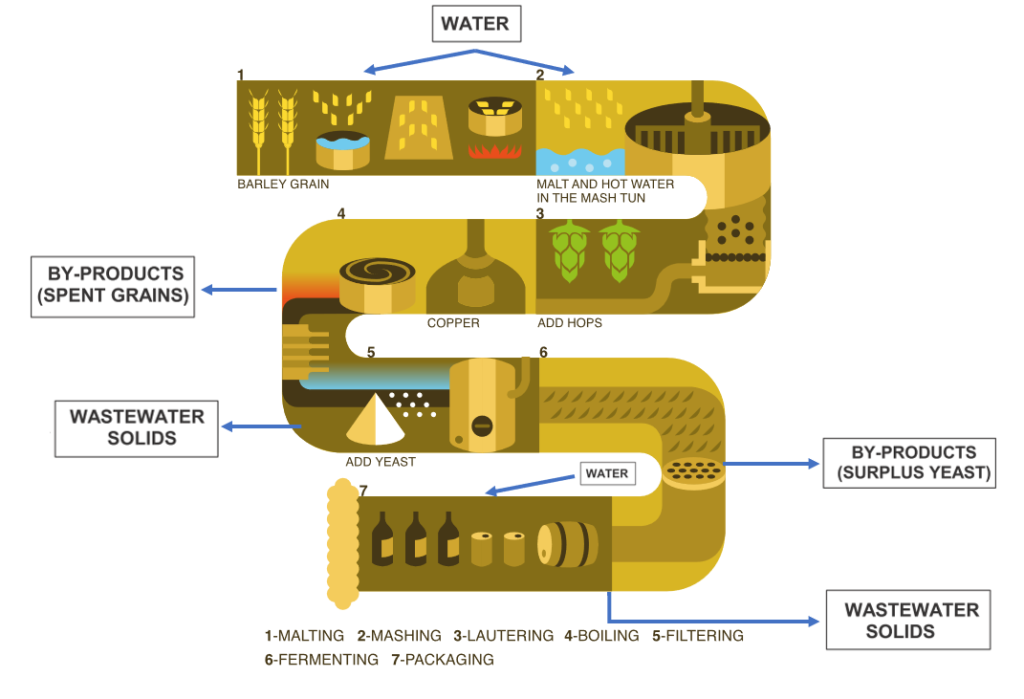Brewing is an inherently inefficient process. But it can be made better. A few weeks back, at a B Corporation informational meeting, I asked the speaker, “Why aren’t more breweries B Corps?” Another attendee responded: “Brewing isn’t sustainable. Trust me—I’m an engineer.”
I felt personally affronted by this claim, as I’ve dedicated most of my working life to learning how to help breweries reduce their environmental impact.
So, here’s some of what I know about sustainable brewing.
It turns out that there are at least 13 breweries that are certified B Corporations. The Brewers Association has outreach programs to help breweries become more sustainable. It also offers free public access to best practice manuals in areas of environmental impact.
The five main environmental impacts of brewing are:
Water consumption: 90-95% of beer is water. Water is also lost in activities such vessel and facility cleaning.
Wastewater: The water that is not used directly in the brewing process usually turns into wastewater that can carry byproducts such as high concentrations of organic matter.

There are typically 3 categories of waste water. Each should be dealt with in its own manner:
- Industrial process wastewater– usually made up of residual beer that should be reused
- Sanitary waste water–could cause clogging of pumps and screens
- Rain water–should not be discharged to a wastewater treatment plant
Solid waste and byproducts: These consist of organic material from the brewing processes and are usually deposited with nearby farms, but sometimes end up in landfills.
Energy: Brewhouses use large amounts of heat and fuel in the brewing process.
Emissions to air: Most emissions are CO2 from energy consumption, but CO2 is a natural byproduct of fermentation. Plus, most breweries purchase CO2 to add to the beer or to tap their kegs. Other air pollutants include odor and dust from the boiling process and storage of grains.
The Brewers Association’s Sustainability benchmarking reports and best practice manuals all contribute to our knowledge of the brewing industry’s environmental impact. Breweries voluntarily report to the Brewers Association on each of the five environmental impacts. All these impacts are then compared to the amount of beer produced. This allows for a standardization and a comparison of breweries to each other.
Although it may seem like the first step to reduce impact is a large upfront investment, a change in employee engagement delivers benefits at no cost. High producing-consuming brewing facilities can increase their efficiencies by 20-50% without investing in new infrastructure.
The engineer may still be right. A “My cleanest dirty shirt—Kris Kristofferson” paradox could befall such an analysis of any industry. It is important, however, to compare the beer industry to other industries when speaking of its sustainability. I am not aware of any such analysis to date. As more breweries reach for B corporation certification this will allow a more standardized approach across industries for comparative analysis in environmental and social impact.
What matters is that breweries strive for best practices and continue to innovate to be the cleanest “shirt” they could be.